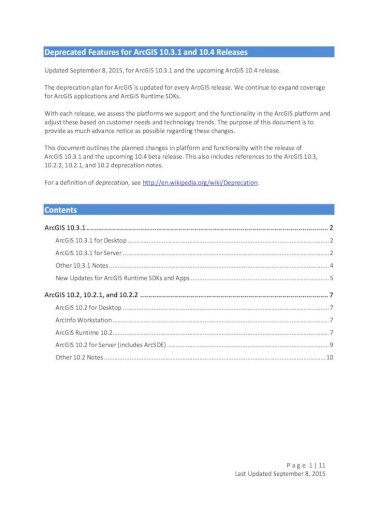

- #Arcgis 10.3 book how to#
- #Arcgis 10.3 book pro#
- #Arcgis 10.3 book software#
- #Arcgis 10.3 book download#
In contrast to GIS workbooks that teach skills for one-time projects, this book has users build and use a crime mapping and analysis system to meet all spatial information needs of a police department.

This second edition builds upon the first edition by updating tutorials, adding a new chapter on building and evaluating predictive models using ModelBuilder and ArcGIS's hot spot analysis tools, and adding a capstone project on hot spot modeling. The book presents state-of-the-art methods that can be incorporated into any police department's standard practices. Dodson GIS Tutorial for Crime Analysis, second edition, is a workbook for crime analysts and students of criminology. GIS Tutorial for Crime Analysis by Wilpen L.
#Arcgis 10.3 book pro#
What you will learn - Using ArcGIS Pro to create visually stunning maps and make confident cartographic decisions - Leverage precise layout grids that will organize and guide the placement of map elements - Make appropriate decisions about color and symbols - Critically evaluate and choose the perfect projection for your data - Create clear webmaps that focus the reader's attention using ArcGIS Online's Smart Mapping capabilities Who this book is for If you are a GIS analyst or a Map designer who would like to create and design a map with ArcGIS Pro then this book is for you. By the end of this book, you will feel more confident in making appropriate cartographic decisions. You will learn Smart Mapping, a new feature of ArcGIS Online that will help you to make maps that are visually stunning and useful. Finally, you will be introduced to the ArcGIS Online ecosystem and how ArcGIS Pro can utilize it within the application. The later chapters will help you understand the various projection systems, trade-offs between them, and the proper applications of them to make sure your maps are accurate and visually appealing. You will be then exposed to the techniques required to ensure your data is clear and legible no matter the size or scale of your map. Then you will learn Cartographic Design techniques using ArcGIS Pro's feature set to organize the page structure and create a custom set of color swatches.
#Arcgis 10.3 book how to#
Once the plan is in place you will learn how to organize the Contents Pane in ArcGIS Pro and identify the steps involved in streamlining the production process.

The book begins by outlining the steps of gathering data from authoritative sources and lays out the workflow of creating a great map. This book will help you create visually stunning maps that increase the legibility of the stories being mapped and introduce visual and design concepts into a traditionally scientific, data-driven process. Mapping with ArcGIS Pro : design accurate and user-friendly maps to share the story of your data by Amy Rock Ryan Malhoski Implementing the ArcGIS Pro technique to design accurate, user friendly maps and making appropriate cartographic decisions Key Features - Build visually stunning and useful maps - Understand the cartographic workflows and the decisions you must take before creating the map - Learn to create appropriate map elements and layout designs -Use the ArcGIS Online's Smart Mapping technique to create clear webmaps Book Description ArcGIS Pro is a geographic information system for working with maps and geographic information.
#Arcgis 10.3 book download#
Features Offers a comprehensive overview of LiDAR technology with numerous applications in geography, forestry and earth science Gives necessary theoretical foundations from all pertinent subject matter areas Uses case studies and best practices to point readers to tools and resources Provides a synthesis of ongoing research in the area of LiDAR remote sensing technology Includes carefully selected illustrations and data from the authors' research projects Before every project in the book, a link is provided for users to download data The first six projects are for basic LiDAR data visualization and processing and the other five cover more advanced topics: from mapping gaps in mangrove forests in Everglades National Park, Florida to generating trend surfaces for rock layers in Raplee Ridge, Utah.
#Arcgis 10.3 book software#
It provides 11 step-by-step projects predominately based on Esri¿s ArcGIS software to support seamless integration of LiDAR products and other GIS data. The LiDAR data within this book is collected from 27 areas in the United States, Brazil, Canada, Ghana, and Haiti and includes 183 figures created to introduce the concepts, methods, and applications in a clear context. LiDAR remote sensing and applications by Pinliang Dong Qi Chen Ideal for both undergraduate and graduate students in the fields of geography, forestry, ecology, geographic information science, remote sensing, and photogrammetric engineering, LiDAR Remote Sensing and Applications expertly joins LiDAR principles, data processing basics, applications, and hands-on practices in one comprehensive source.


 0 kommentar(er)
0 kommentar(er)
